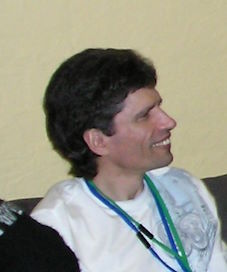© 2021 Nigel Nunn
© 2021 ANZURA, Australia & New Zealand Urantia Association
By Nigel Nunn, ACT

Interesting development: for 40 years cosmologists have been arguing about the best way to simulate (1) the clustering of galaxies and (2) the flat rotation curves of spiral galaxies. Invisible (dark) matter works well for explaining the clustering, but modified Newtonian gravity works better for spiral galaxies.
Around 2015, researchers began to take seriously the idea that there might be at least two distinct types of invisible mass: one kind that forms halos around galaxies, and another that forms a superfluid disk of axion-like particles within galaxies. This is very nearly the exact same picture presented in The Urantia Book: halos of segregata, within which whirlpools of ultimata form.
This kind of two-phase model for dark matter has now reached the pop.sci domain: in the links below, Sabine Hossenfelder sketches the idea. See especially from time 9:10 in the video, where she proposes that all we need are (1) a new field and (2) a new particle formed by a phase transition of that field. Her “field” becomes our pool of segregata, and her “particle” becomes our quantized vortex in that field, the ultimaton.
YouTube – Sabine rethinks dark matter
https://youtu.be/4_qJptwikRc?t=548
Transcript: Dark Matter – the situation has changed
Of course one significant difference is that The Urantia Book uses those axion-like particles as “preons” with which to build standard model particles – leptons and quarks – clusters of clusters of huddling ultimatons. Stay tuned!
For those interested, the YouTube videos in this PlayList step through the details:
Urantia Book Physics and Cosmology
https://www.youtube.com/playlist?list=PLujf81__tQbQ_tAoVrvr6xOPm4XkZUStU
As I try to show in these videos, in 1934 The Urantia Book appears to have given us just enough to solve the central mysteries of physics and cosmology, at the very same time they were first identified.
